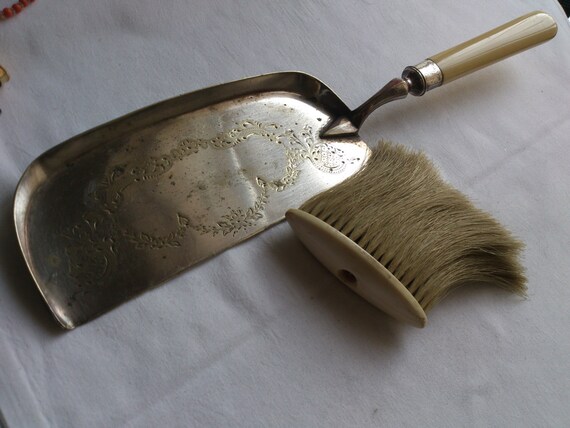

The "scraper functions as brush and pan itself," Miller wrote in his patent application, which was officially granted in 1941. In his 1939 patent application, Miller describes his "crumb scraper" as a "simple narrow piece of transversely curved strip of metal, plastic or the like, bent on a segment of circle of about 120 degrees": the perfect shape for scooping and holding crumbs. Ray Machine bought the patent for this table crumber in the late 1950s from Baltimore restaurateur John Henry Miller, who owned Miller Brothers Restaurant, the place to eat and be seen in Baltimore for the first half of the 20th century (FBI director J. Table crumbers are part of an "ancestral service tradition." But who invented the familiar version we know today? This is what Ray Machine calls the original crumber.

It could easily mistaken for a pen at first glance. But perhaps the most widely seen crumber today is the six-inch-long rounded metal crumber with clip. Throughout restaurant history, table crumbers - the tools used to sweep stray crumbs and bits of food off of tabletops - have taken many forms: a small brush and pan, a tiny brush on its own (which sweeps crumbs into a waiter's hand), and a flat metal scraper or blade, with or without a handle. It also has an unusual side business that appeals to white tablecloth restaurants around the world: Ray Machine makes metal table crumbers. Ray Machine Incorporated, a large manufacturing plant in Baltimore, Maryland, makes parts that end up in planes, tanks, and computers - it boasts clients in the aerospace, government, and defense industries, with customers like Lockheed Martin and General Electric.


 0 kommentar(er)
0 kommentar(er)
